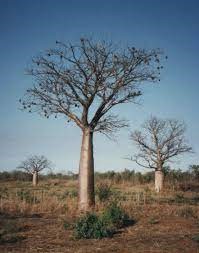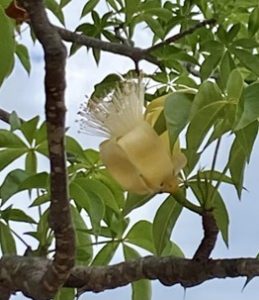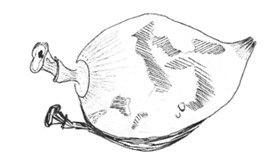Boab
Adansonia gregorii 
Larrgidi/Larrgardi Yawuru (west Kimberley languages)
Flowering and Fruiting:
They flower and fruit between Laja and Marrul between October and March
The Boab is an iconic Kimberley tree and is unique in Australia. The common name ‘boab’ is a corruption of word ‘baobab’, an Arabic word of African origin that means ‘father of many seeds’; the boab and baobab tree belong to the same genus. Of the eight baobab species, two are found on the African mainland and the others inhabit the African island of Madagascar, the unrivalled botanical epicentre for the genus. The Latin ame “gregorii” honours the Australian explorer Augustus Gregory.
Boab trees are found from sea level to elevations of about 300m, and the range extend from the Kimberley to the Victoria and Fitzmaurice rivers in the Northern Territory. However, they are quite hardy and can be transplanted even when very large. King’s Park in Perth is home to gija Jumulu (Giant Tree), which was transplanted 320 km from Warmun down to Perth in 2008. At 37 tonnes and 18 metres tall, it’s the longest known land journey of a living tree this size. Gija Jumulu is estimated to be over 750 years old.
Boab trees have large creamy flowers, with curling petals and leaves. The fruit is encased inside the hard nuts which are a popular for carving onto; the Kimberley Art and Photographic Prize in Derby has a category specifically for Boab Art, as an acknowledgement of the tree’s unique status for the region.
The boab fruit is edible and has a citrussy white pith that is refreshing to eat. Traditionally the pith could be combined with water to make a porridge or then baked on coals. It can aid digestion or be soothing for upset stomachs. The roots of seedlings can be added to salad for soem crunch, and the tree’s young leaves are also edible and can be eaten raw or cooked like spinach or other greens. While adult tree roots can be made into string.
For more information: “Broome and Beyond; Plants and people of the Dampier Peninsula, Kimberley, Western Australia” full reference p 71

